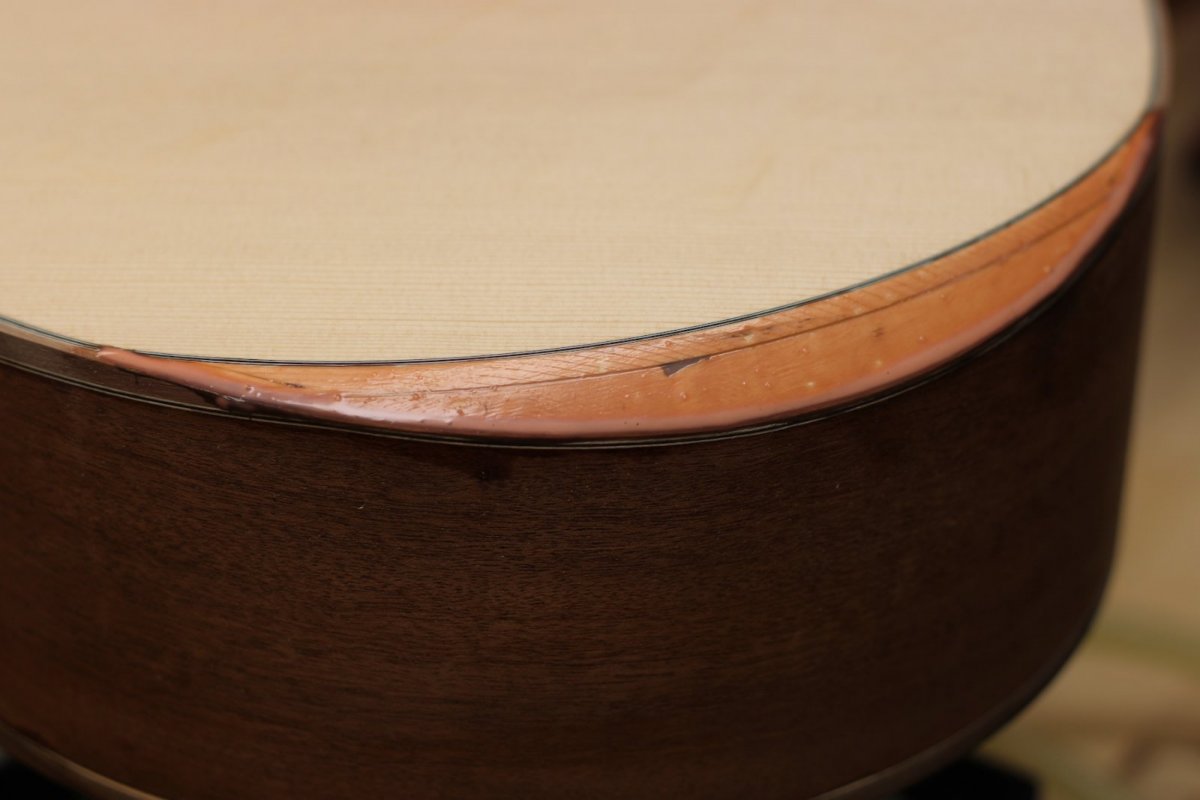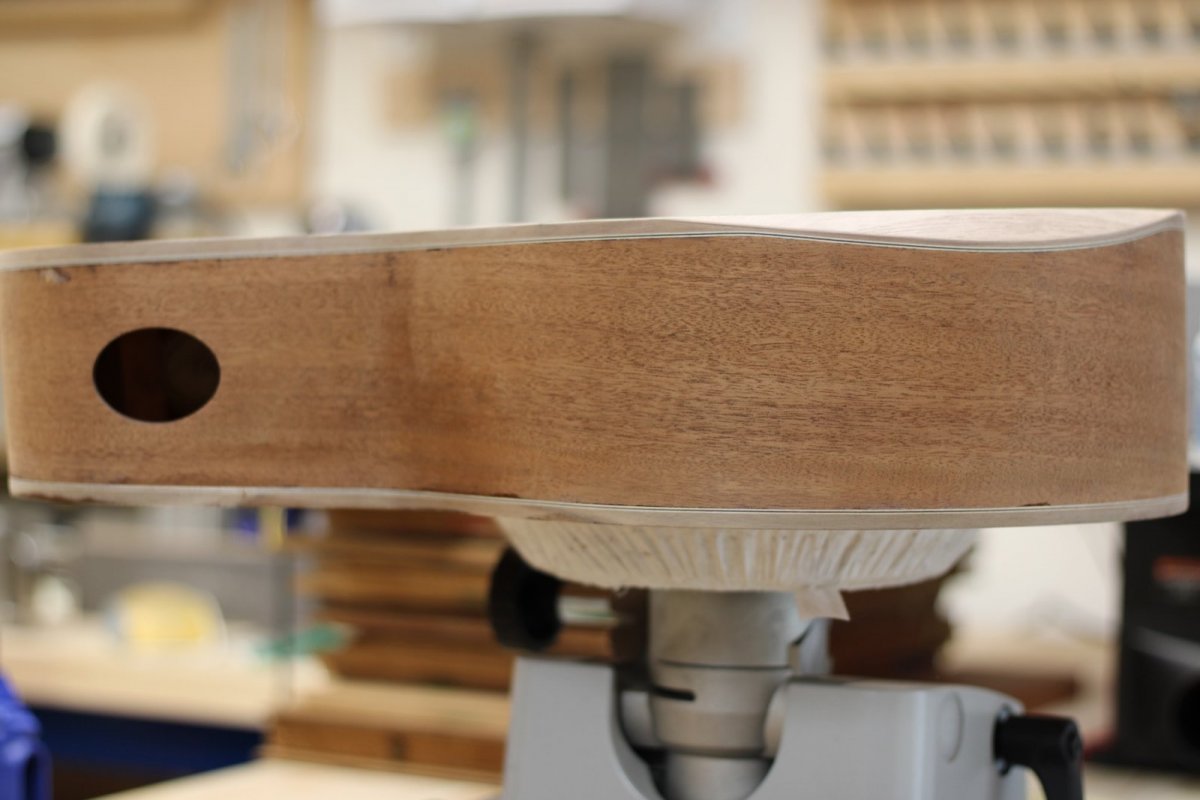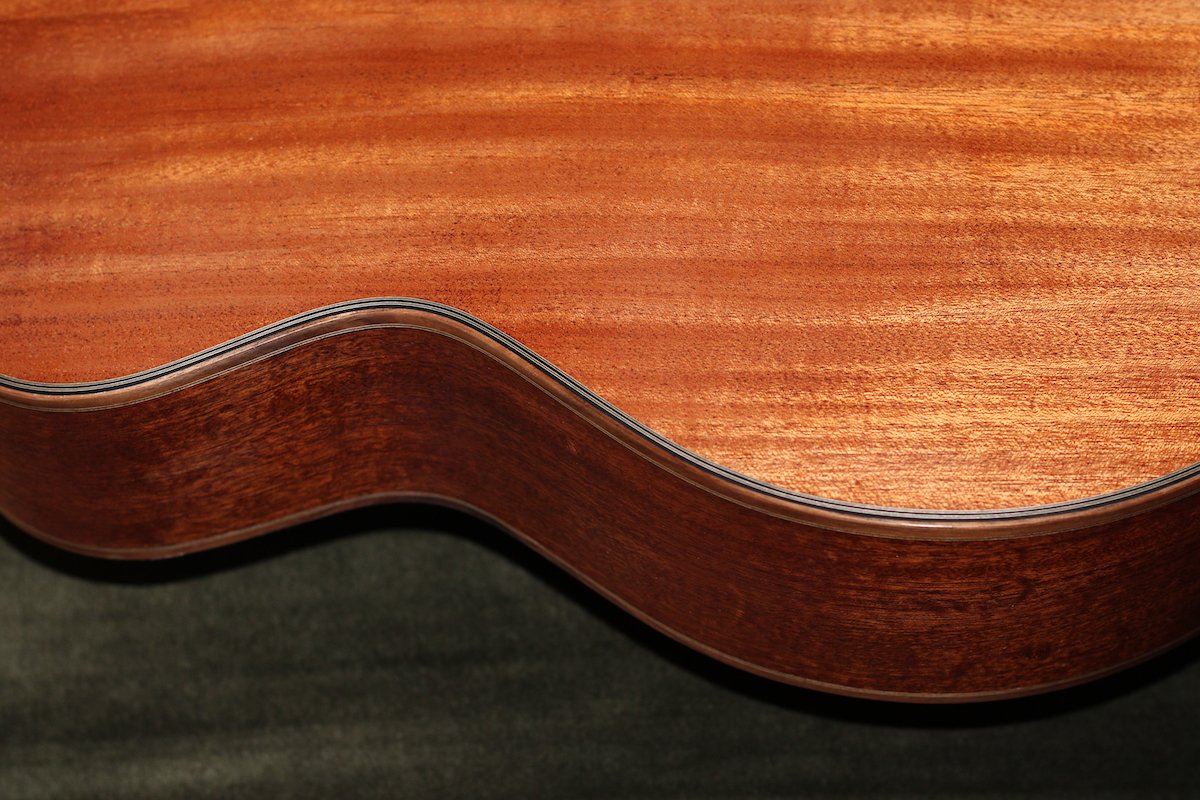The pins are holding that skinny little strip of Walnut binding against the gentle curve cut into the side. Without the pins keeping the binding held tight against the curve, the wood wants to travel in a straight line.
I realize that the angle I held the camera at kind of hides the curve. It will make more sense when I photograph the completed arm bevel.
I realize that the angle I held the camera at kind of hides the curve. It will make more sense when I photograph the completed arm bevel.



